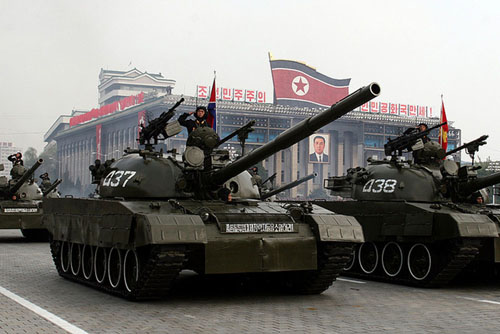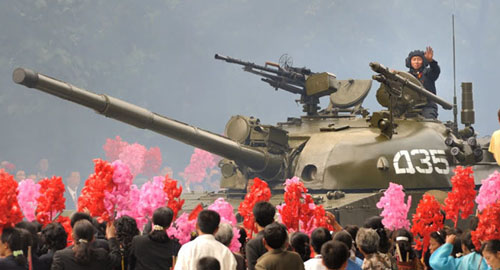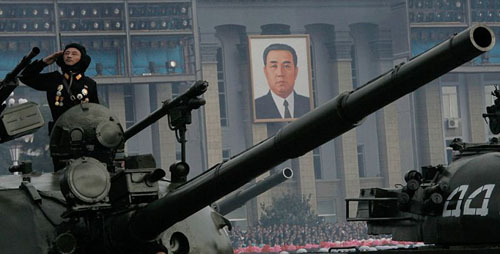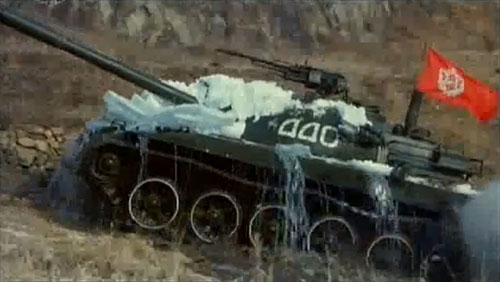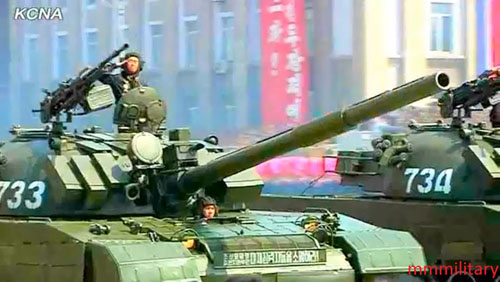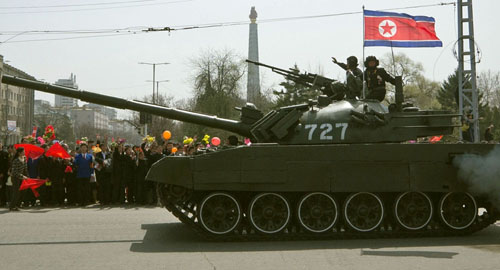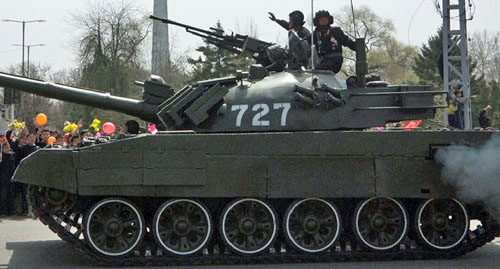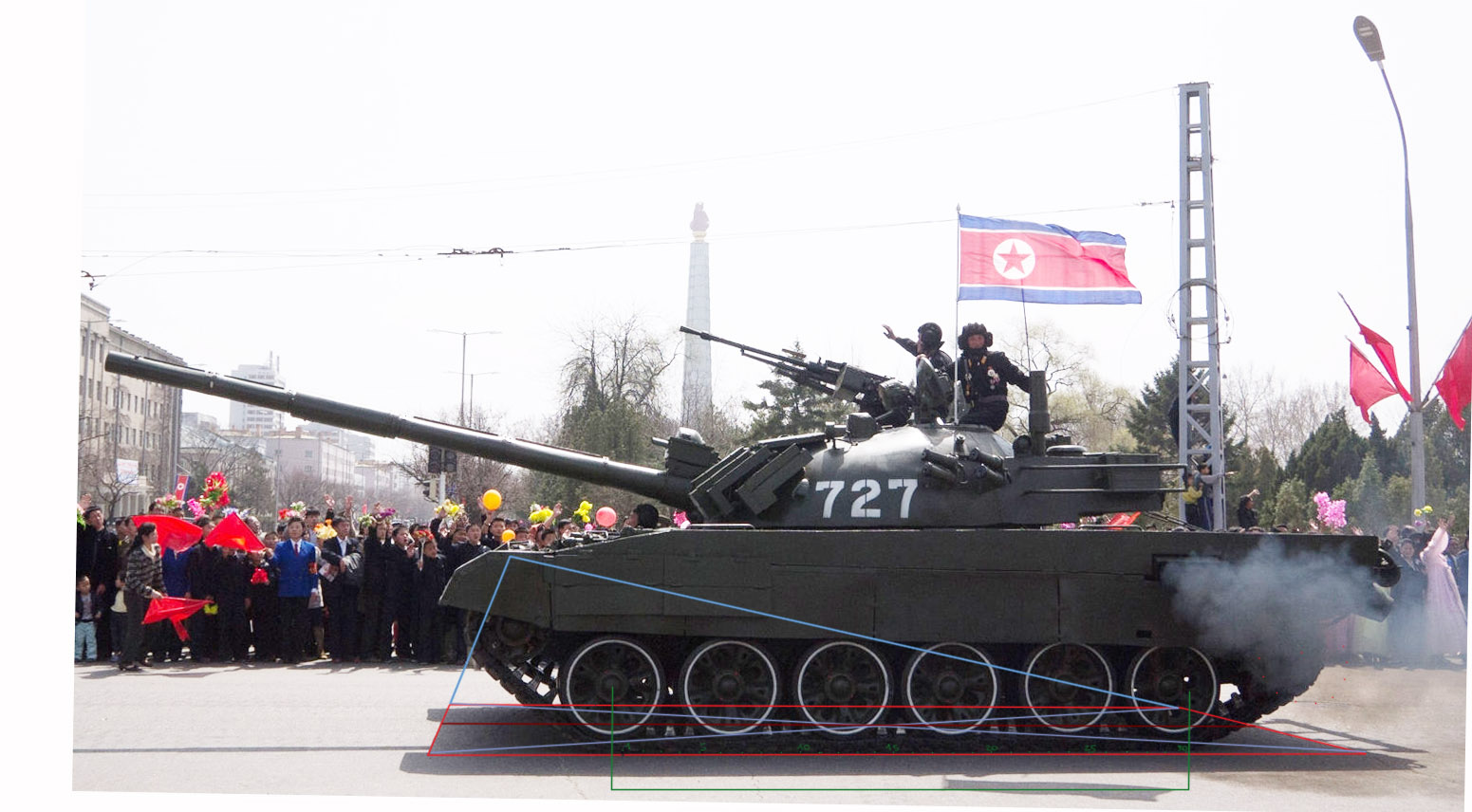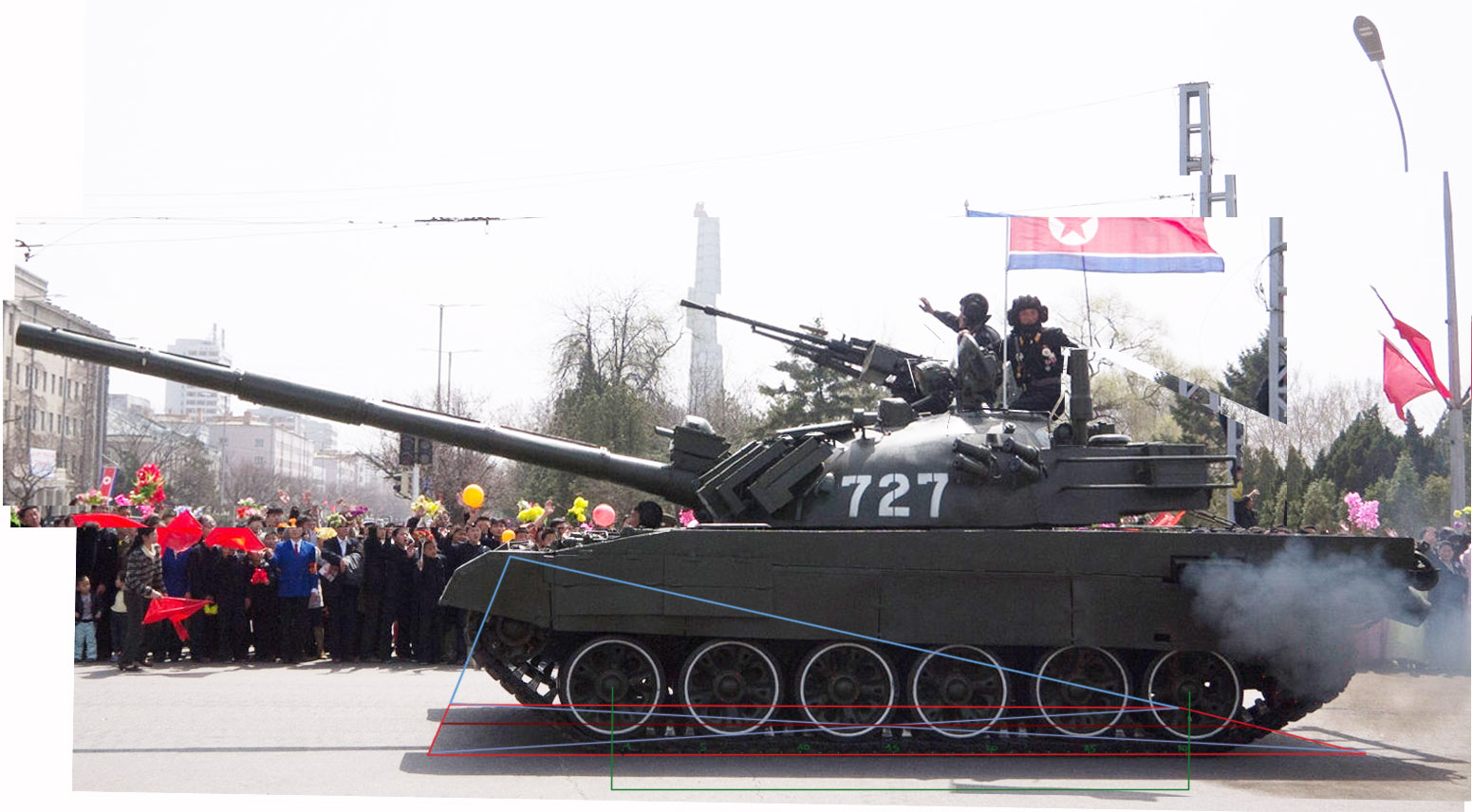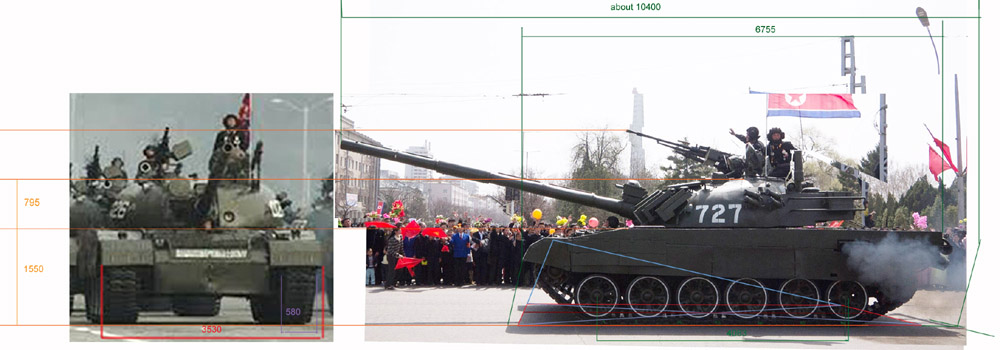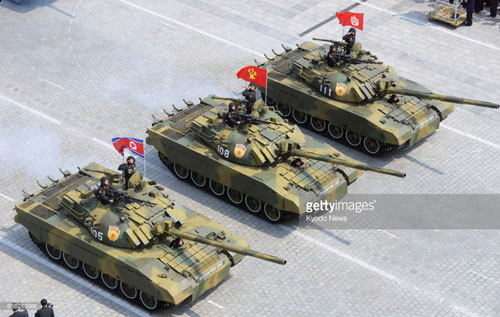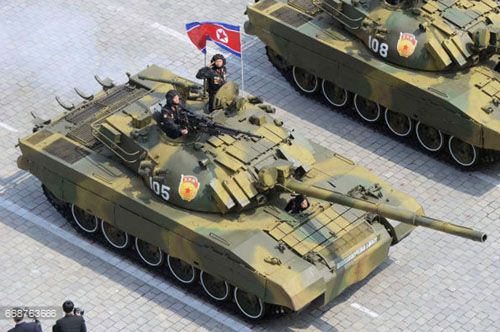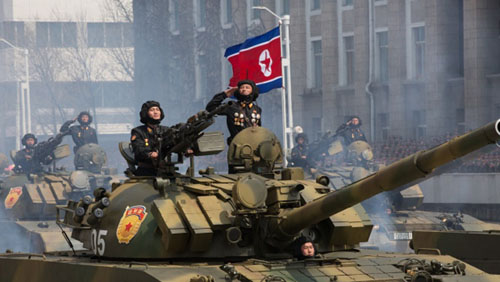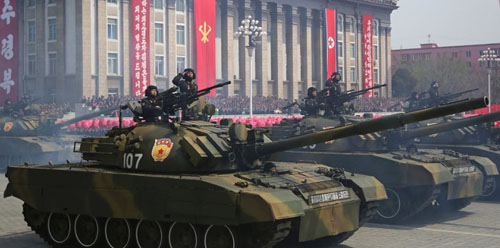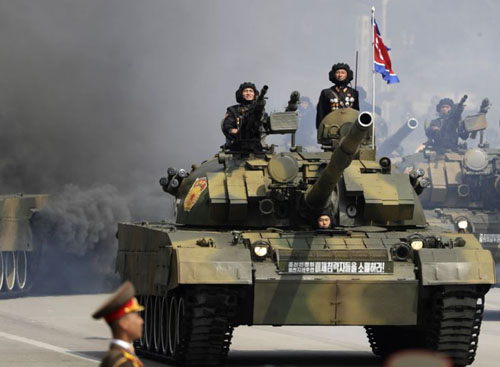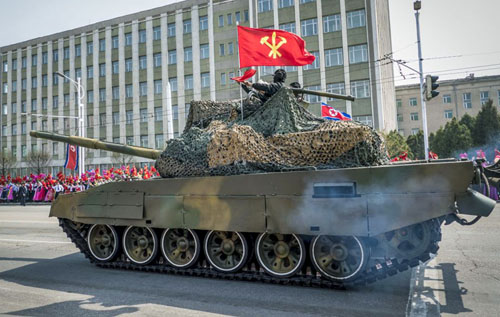The most apparent characteristic of this tank, when compared to the Pokpung-ho, is the vintage-like cast turret, similar to that of T-62 and early Chonma-ho, but obviously higher.
While the reason for the return to a cast turret is unknown (perhaps they improved their casting techniques and were able to obtain a thicker armour without making them frail for grains growth), the reason for its increase in height is to lodge a 125 mm gun, bigger than the 115 mm Rapira gun of the T-62 and Chonma-ho.
It should allow not only some more space to the crew, but also some more degree in elevation and depression of the gun, an important factor on a mountainous ground as Korea is.
The gun hasn't any autoloader as installed on T-72s: the gunner's position is in front of the tank commander as on Chonma-ho, and the loader stands on the right. With the driver, the total crew is of four.
A laser rangefinder is located over the gun barrel.
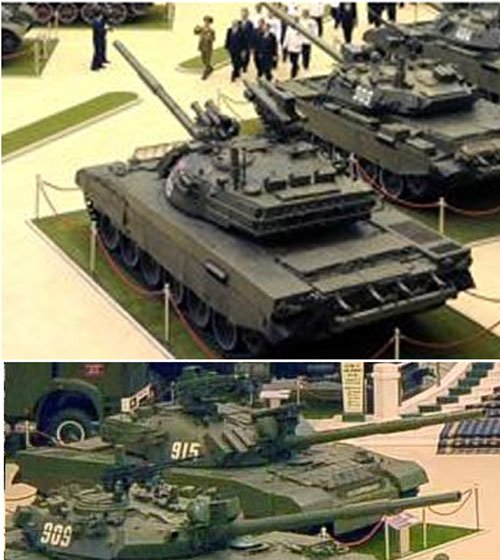
This photo shows also the installation of two Manpad (?) SA missiles aside the gunner's machine gun, manually operated, plus two AT-5 Spandrel over the laser rangefinder, operated from inside the tank. Clearly, the external installation of antitank missiles proves that the gun isn't able to fire guided missiles on its own.
The hull is clearly related to that of Pokpung-ho, being a stretched version of that of Chonma-ho. The size should be about the same; its total lenght could be esteemed with some cut and drag on a scale drawing of a T-62.
Neverthless, the hull has some differences when compared to the Pokpung-ho:
there are sheet covers over the fenders, more or less as on T-72 and ZTZ-96 but different from those on the right skirt of Pokpung-ho; those covers doesn't seem closed boxes, but cover the upper, outer and front side only. Under the covers, the layout of boxes and cans is thought to be similar to that of T-62 (apart for the rear of the right one, where rectangular grilles are visible, covering some air intake or cooler.
A limited area of the frontal plate is covered by what seems an array of reactive armour elements.
The skirts, made of rubber sheets, are reinforced with some thicker sheets as on Pokpung-ho and the latest Chonma-ho, inspired to T-80U.
The tracks visible on parade photos look as those of Chonma 214, 215 and 216: similar to those of early Chonma (and T-62), but provided with rubber parts, probably removable.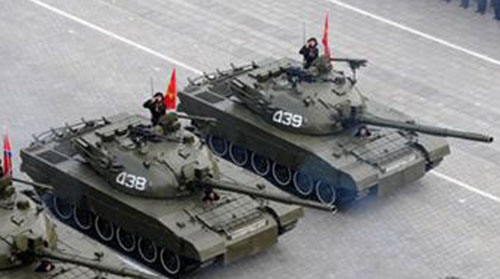
About Songun-Ho, these photos show how wide the rear extension of the turret is; they show the engine deck, whose grilles seem to be closed by folding covers. The exhaust outlet is on the left side, on the usual position for T-62-derived tanks. The main surprise is the presence of two rectangular openings, probably closed by grilles, on the rear upper part of the right cover of fenders. I don't know what they are for.
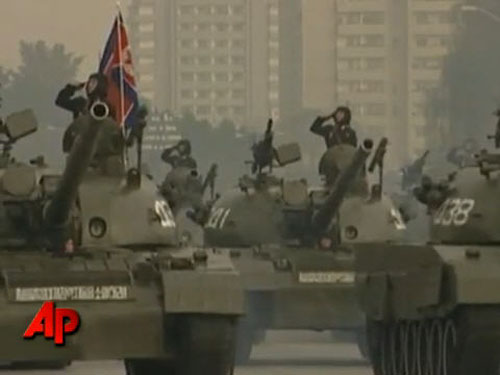
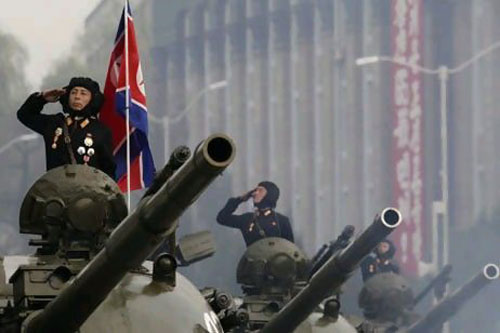
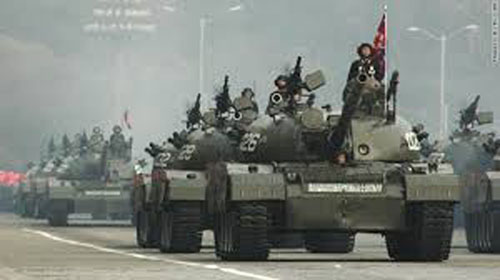
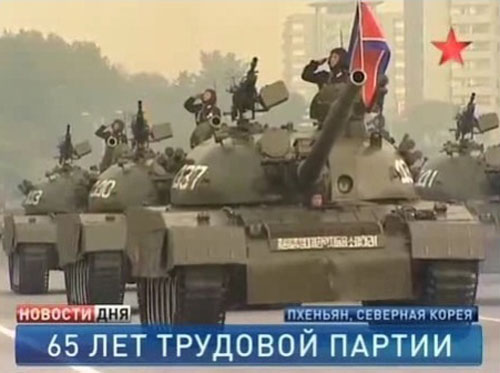
I wonder what is the thing with a black lens on the left of the turret's roof, clearly visible on the photo above. A night vision sustem or a guide system for antitank missiles that could be installed over the laser rangefinder?
Below, a detail of the KPV 14.5 mm machine gun. Its support is very similar to that of the DShKM of standard T-55 and 62, but the suport of the machine gun itself is longer. The aiming device is completely different too.
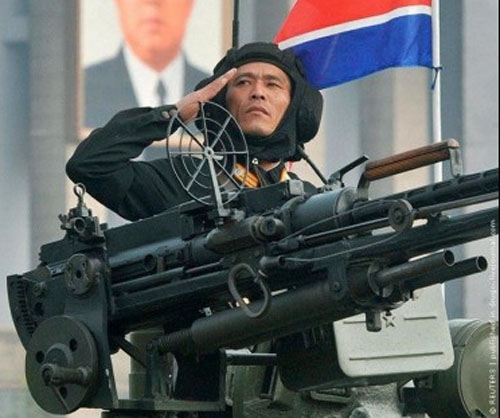
From http://www.armyrecognition.com/index.php
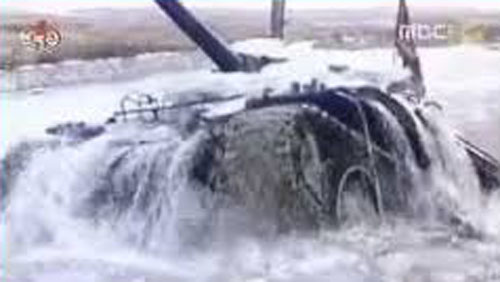
These images of a Songun-ho on manoeuvres show it while emerging from some frozen river.
The photo is interesting because the tank hasn't its side skirts; the shape of the upper part of the track allows to se where the 3 support rolls are located. Seems that the tracks hadn't the rubber blocks when out of the streets of the capital city.
The image shows also the considerable lenght of the box and canister than protrude behind the turret. It's unknown if such extension communicates with the inside of turret, and if contains an ammo magazine, or it is simply a store for other loads accessible from outside only; the latter idea looks more likely.
Note that the tank on manoeuver hasn't the MANPAD missile on the turret.
Let's call them Songun-ho II.
All the bricks are oriented to the front, and give limited protection from lateral attacks. Besides they are wider and less numberous than corresponding Russian protection on T-64/72/80, so each fired brick leaves more unprotected space to a second hit.
The reactive armour bricks on the front of the turret look completely different from those on the top and on the glacis plate, that are very thin.
Note the absence of missiles on these photos: probably they are not an update, but an easily dismountable option.
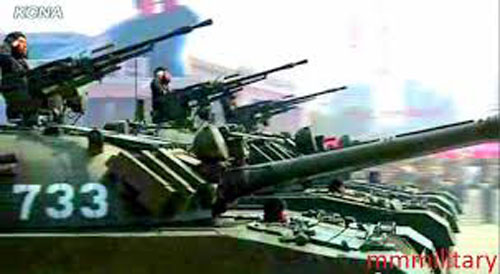
The same tank, nearly a profile.
Below, a photo collage from a South Korean forum, putting into evidence the similarities of the gun barrel of Songun to that of T-72.
The image gives a detail of the basket on the rear of the turret too.
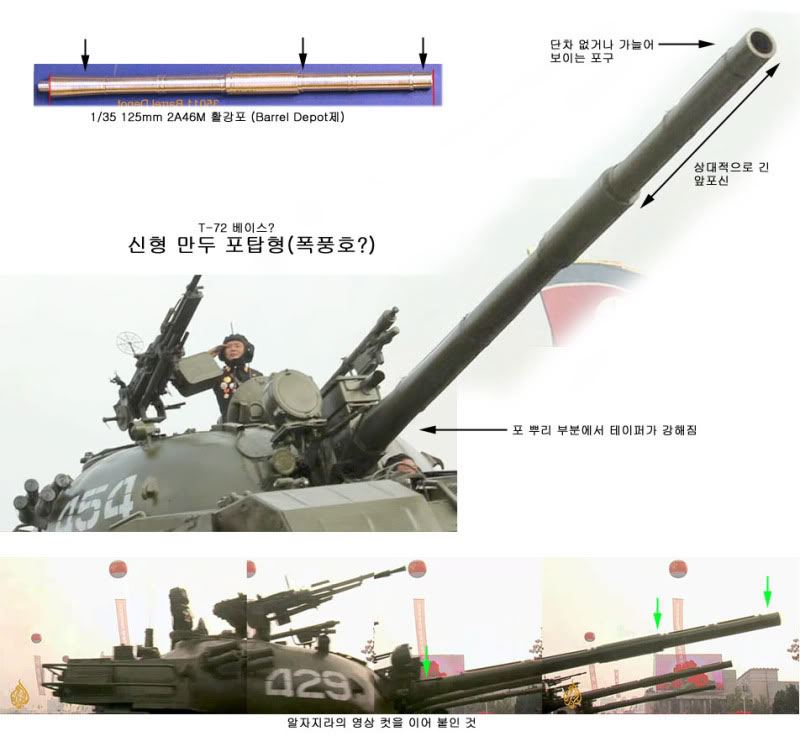
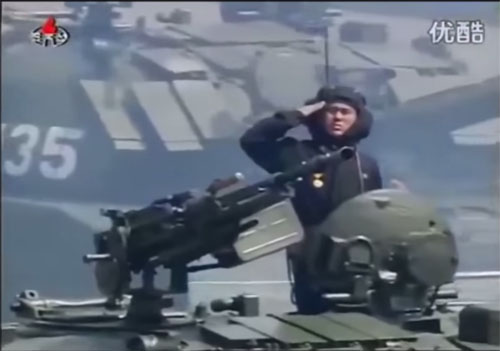
Left: a detail of the reactive elements on the roof of the turret.
Below left: another close image, nearly a profile, that could be helpful
to evaluate the proportions of the tracks. It would be good to know
if the diameter of the main wheels is the same of those of T-62, or
slightly less.
Below, an enlarged detail of the same image allows to see details more
closely. All the images with blue outline are linked to wider versions
of them.
Note that the tracks between the front wheel and the first road wheel
are not parallel; this because all the wheels and suspensions on the
right side are slightly moved back in comparison to the other side;
this because each torsion bar occupies all whe width of the hull,
so they must be shifted each other. Of course, this is a charateristic
common to all tracked vehicles with torsion bars suspensions.
The fender is angulated, being higher on the front; this characteristic is common to the T-62.
The photo below, when enlarged, allows to see that two opposite screwheads on each wheel hub are painted red.
